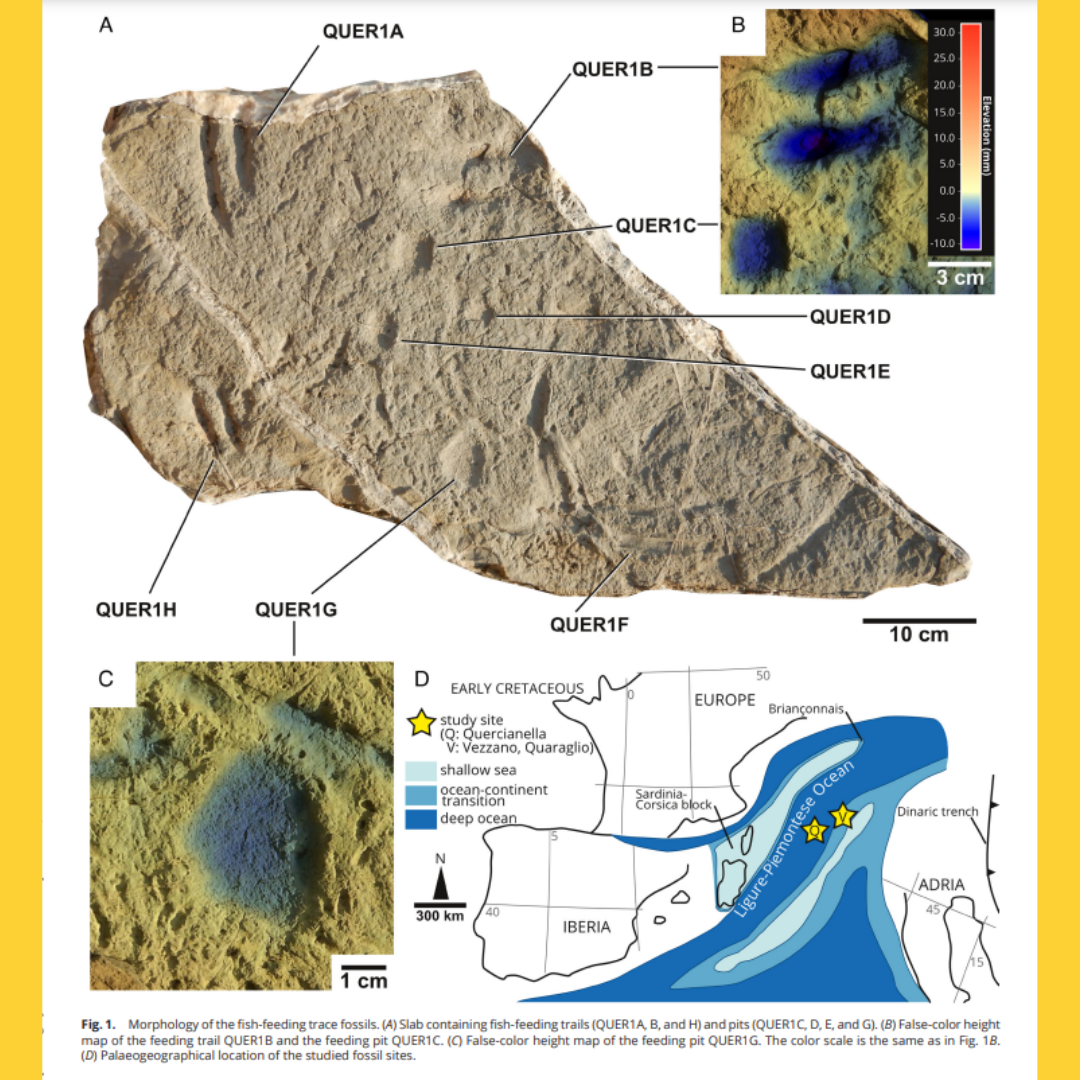Zain Belaústegui’s contribution to the earliest evidence of deep-sea vertebrates
Vertebrate macroevolution has long been characterized by remarkable habitat transitions, from the seas to the air, and even to the stratosphere. These shifts were driven by the development of specific morphological and physiological adaptations over millions of years. However, the colonization of the deep sea has remained a largely unknown ecological transition due to the challenges of fossil preservation at the ocean floor.
A groundbreaking discovery has revealed the earliest evidence of deep-sea vertebrates, shedding light on a previously enigmatic chapter in vertebrate evolution. The findings, based on well-preserved trace fossils, challenge our understanding of how vertebrates transitioned from shallow marine environments to abyssal depths.
Published on September 5, 2023, in the Proceedings of the National Academy of Sciences journal (PNAS), the article co-authored by researcher Zain Belaústegui, from the Marine Neogene Paleobiology group at Institut de Recerca de la Biodiversitat, IRBio-UB, reveals the first evidence of deep-sea vertebrates. Dr. Belaústegui's contribution to the article, in addition to participating in the discussion on the identification and interpretation of ichnofossils, provided the experience of a previous study.
Previous study of dietary trace fossils of abyssal fish
The previous study was carried out together with Fernando Muñiz in 2015 at the Piedras River estuary. In this study they attributed for the first time to the activity of fish a specific type of bilobed trace that had previously always been identified as produced by arthropods (Cruziana and Rusophycus type structures). Specifically, they focused on the activity of current mojarras (Diplodus vulgaris) and the traces they left, identical to those described in the article.
Revolutionary discovery and change of the rules of the game.
Scientists have found trace fossils from the abyssal plain of the Tethys Ocean, which existed between the ancient continents of Gondwana and Laurasia, providing conclusive evidence of the existence of fish inhabiting the deep seafloor since the Early Cretaceous (Hauterivian-Barremian).
These trace fossils bear a striking resemblance to the tracks created by modern demersal fish scratching the substrate. Interestingly, the findings suggest the activity of at least three species of fish: a toothless neoteleosti; a chimera-like fish, and a third with a large fin. This observation aligns with the idea that Early Cretaceous vertebrates transitioned to the deep sea, probably driven by the availability of new food sources.
Previous studies suggested that deep-sea fish became extinct due to oceanic anoxic events (OAS), so modern marine fauna was the result of recolonization from the OAE2 (the most recent oceanic anoxic event). However, the newly discovered trace fossils predate OAE2, indicating that it was not the initiating factor for vertebrate colonization. The research results suggest that vertebrates colonized the deep sea in the Early Cretaceous and that transition may have been due to an increase in food sources rather than a change in deep-sea oxygen levels. Furthermore, they indicate that the abyssal plains already presented a modern-type deep-water ecosystem, characterized by multispecies aggregations of fish.
New answers about the history of life.
Dr. Zain Belaústegui, co-author of the study, comments on the implications of this discovery: “The study shows us the importance of the fossil record and paleontology to answer relevant questions about the history of life. In this case, we describe the fossil evidence that would mark the moment in which vertebrates would have conquered the deep marine environment for the first time, approximately 130 Ma.”
The discovery also highlights the importance of trace fossils in understanding ecological transitions. As researchers continue to study these trace fossils and their implications, the story of vertebrate evolution takes another remarkable turn.
The deep sea, once considered a barren and uncharted frontier, now reveals itself as a place where life has been thriving for much longer than we ever imagined, deepening our appreciation for the resilience and adaptability of vertebrate life on Earth.
Source: Baucon, A., Ferretti, A., Fioroni, C., Pandolfi, L., Serpagli, E., Piccinini, A., ... & Priede, I. (2023). The earliest evidence of deep-sea vertebrates. Proceedings of the National Academy of Sciences, 120(37), e2306164120.
